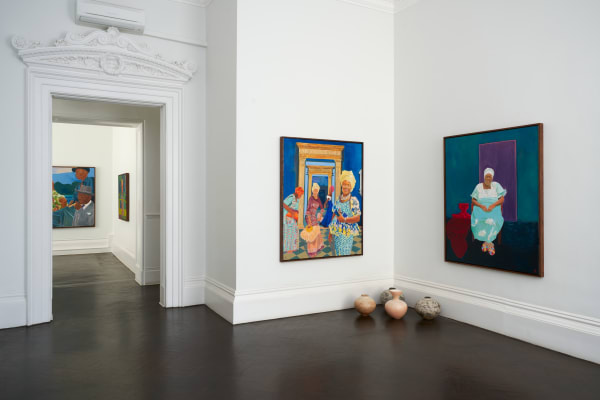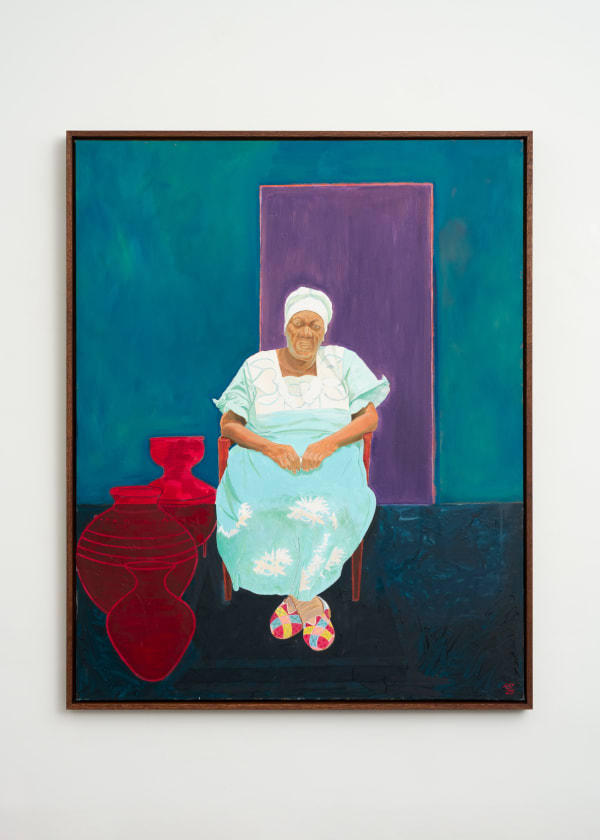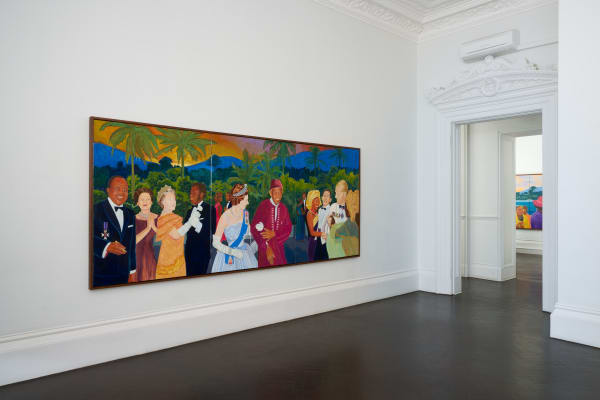This latest body of work by the Ghanaian-born, British-Sierra Leonean artist explores the complex intersections of race, identity, and belonging through the lens of the Krio people of Sierra Leone and their historical parallels with the figure of Othello in Shakespeare’s The Tragedy of Othello, the Moor of Venice.
In Othello’s Countrymen (The Krio Enigma), Arthur Timothy visualises these psychological and cultural legacies in large-scale oil paintings rendered in fresh washes of colour.
Drawing from personal memory, archival family photographs, and historical research, Timothy works invite reflection on the lasting impact of colonialism and the fragile complexities of assimilation. At once intimate and expansive, this timely and poignant exhibition explores how identity is shaped - and often fractured - by the forces of history.
Krios - descendants of freed enslaved Africans - were once referred to as “Black English”, a label worn with pride by the community’s upper classes. For many, this designation affirmed their embrace of Victorian values: they were Christian, educated in the British system, and regarded England as a second home. The Sierra Leone colony had, in fact, been founded on the idea of creating “Black Englishmen” - enlightened and civilised Africans who reflected British ideals and rejected the “uncivilised” customs of the African interior.
Many Krios completed their education at elite British schools, dressed in the latest London styles, and mingled, often self-consciously, within upper-class British society. But as the 19th century wore on, attitudes in Europe shifted. The same traits that had once marked the Krios as model subjects began to be viewed with suspicion. Their Britishness was no longer enough. Increasingly, they were treated not as peers, but as imitations - reminders of a vision the empire no longer believed in. For many Krios, who had been raised to believe in their acceptance, this shift was disorienting and painful, forcing a reckoning with the limits of equality under empire.
Timothy draws a compelling connection between this historical disillusionment and the character of Othello, who, as Frantz Fanon noted, embodies the internal struggle of a racialised outsider seeking validation within a dominant culture. Othello is eloquent, respected, Christian, and accomplished - yet his adjustment into Venetian society cannot override the prejudices rooted in his Blackness. His tragic arc reflects the same tensions faced by the Krios: the promise of belonging, shattered by the rigid boundaries of race. In Timothy’s work, this parallel becomes more than a reflection on history - it turns into a deeply personal meditation, threading together family memory, the weight of postcolonial legacy, and the quiet, ongoing search to find oneself in the spaces in-between.
Othello's Countrymen (The Krio Enigma) by Isabella Timothy
Arthur Timothy was born in Ghana in 1957 to a Ghanaian mother and Sierra Leonean Krio father, and grew up in Freetown, Sierra Leone, until the age of 9. In Othello’s Countrymen (The Krio Enigma), Timothy seeks to explore the Krio roots of his family and the lasting impact of slavery, displacement, and a century and a half of colonial rule on Sierra Leone.
The title Othello’s Countrymen is taken from the work by the Sierra Leonean Professor Eldred Jones, which examines Elizabethan and Jacobean attitudes to Blackness in the theatre.6 Othello, the tragic Moor of Shakespeare’s play, had seemingly successfully assimilated into Western society, only to be betrayed and ultimately rejected; a parallel that can be drawn to the Krio people.
James Baldwin wrote that “people are trapped in history and history is trapped in them”. To the artist, the history that is trapped in himself and other Krio people manifests as one’s “sense of belonging being displaced”. To not know where your ancestors came from, but to be certain that they had endured the cruelty of slavery and had been sent to an alien land as an experiment in social engineering, is a heavy burden. This enigmatic history has endured in Krio people through the generations, and is set out in vibrant colour by the artist in these paintings.
- Excerpts from Curatorial Essay by Isabella Timothy
Download the press release below for the full curatorial text and more information.























